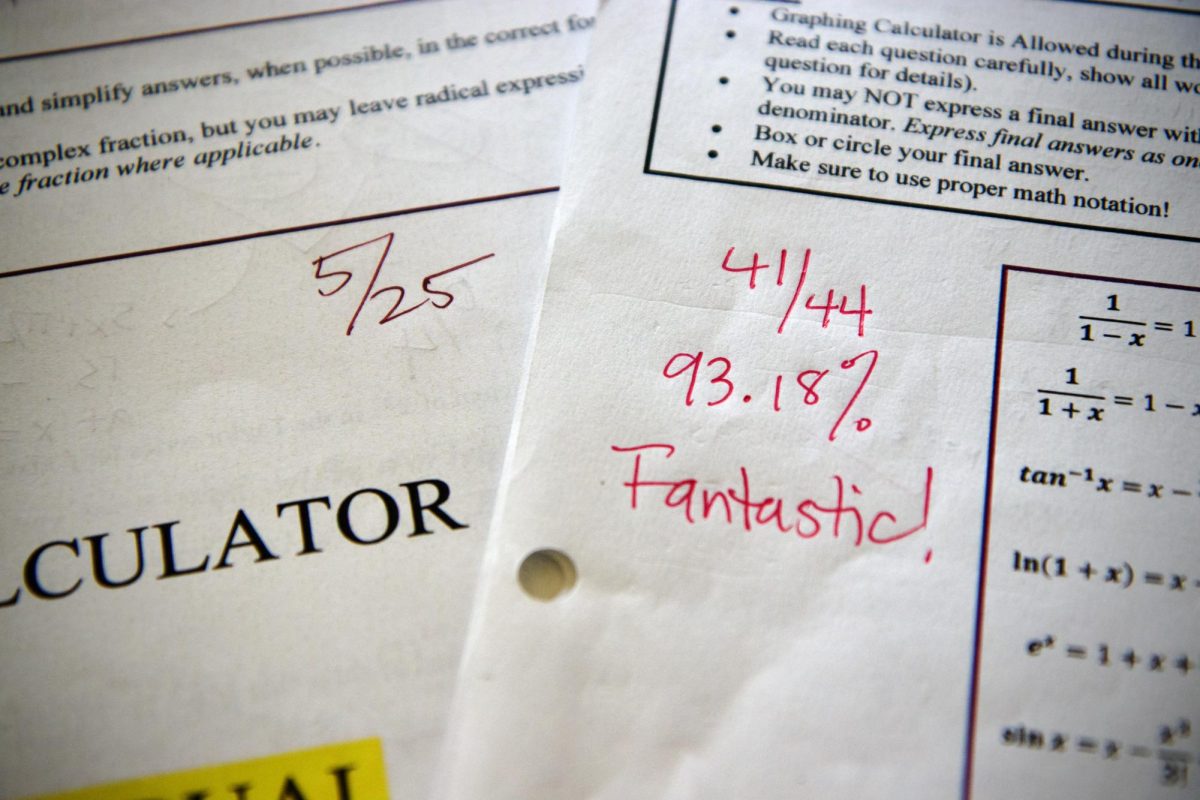Recently, Sacred Heart Preparatory has become one of many schools nationwide to implement minimum grading. Minimum Grading is the increasingly controversial policy that sets the lowest possible grade for any homework assignment or assessment to 50 percent, regardless of whether the work has been submitted or would traditionally earn a lower grade. Will this new policy enact positive changes to students’ grades or further contribute to grade inflation and lower motivation for students? Enacting the 50 percent policy makes it difficult to fail a class, even if one doesn’t submit a majority of their assignments. So will this policy actually take pressure off and weight off assignments, or simply demotivate students?
The motivation behind this new policy lies in the 100-point scale unfairly assigning a 60 percent margin for a failing grade and only a 10 percent margin for other letter grades, according to Mr. Jorge Reyes, SHP Assistant Principal of Curriculum & Academics. Consequently, there are uneven grade implications for mastering a concept compared to failing or not even attempting a concept. When you don’t turn in an assignment and thus receive a zero, your grade drops dramatically, whereas performing extremely well on a test or assignment may only increase the grade by a couple of percentage points. This uneven distribution of letter grades is unfair and allocates less reward in comparison to punishment. To combat this, using a 1.0-4.0 grading scale may work better than the 100-point scale.
Similarly, the junior year English team uses a 6-point scale in an effort to mirror the AP English Language and Composition exam scoring. This grading system has more evenly distributed letter grades, and it eliminates the uneven margins that exist on the 100 point scale. Ms. Colleen O’Donnell, a junior year AP-Language teacher, says moving away from the 100-point scale is important in order to better “focus on a range of skill development, rather than a number.” She explains in English “grades [are] not about a single number,” but rather are about enhancing your critical thinking skills and maturing your voice. Both changing the grading scale and implementing minimum grading attempts to move away from the potentially harmful mental health effects of the 100-point scale.
The new policy also allows schools to motivate students–particularly those affected by the aftermath of the pandemic. Since COVID-19 shut down in-person learning in 2020, students’ academic performance has taken a dramatic hit. According to Policy Analysis for California Education (PACE), the percentage of high-school students who met or exceeded school standards dropped three percent in English and six percent in Math. By implementing minimum grading, schools can reinstate motivation in students by putting less weight on missing or failing assignments. In turn, this boosts a student’s confidence, self-efficiency, and motivation for future assignments. Having a zero in the grade book is disheartening and can seem impossible to come back from, which can lead to a cycle of demotivation and feelings of incompetence. For instance, Kate Ragatz ‘25 mentioned that “a zero on an assignment can tank your grade for the rest of the semester. Having this large drop as a result of just one assignment—something that could have occurred during an off day or time—could potentially be harmful both for students’ grades and self-perception.”
However, some teachers and students argue that minimum grading fails to hold students accountable for a lack of effort. Ragatz also considered the flipside of the grading policy, saying that “giving students, essentially, a free 50 percent is kind of unfair—why are students being awarded points for no work when those who try on an assignment are given no free points at all?” A 50 percent demonstrates a student who understands half of the information needed. For students who continuously do the minimum amount of work to pass the class, 50 percent may be an inaccurate representation of their understanding and effort. Being absent or not turning in an assignment is, to some educators, not an adequate performance for a 50% grade. If a student realizes they can still pass a class without turning in a given assignment, minimum grading only disincentivizes students to perform their best.
Ultimately, the minimum grading process will likely not be completely grade-altering. High-achieving students are still likely to achieve high while low-achieving students will likely continue to perform on-par with their past performance. However, just a little less pressure on high school students may make an immense difference in students’ mental health, as minimum grading is effective in creating less pressure on students by decreasing the weight of zeros on smaller assignments.










